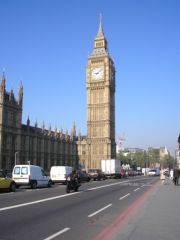Improving transport safety does not tend to be a party political issue. Transport, after all, is more of a means to an end than an end in itself. In addition, very few politicians have made a career out of transport policy. However, there are some key priorities for the next Parliament if we are to continue to make progress towards having the safest transport system in the world.
As transport users, it is on the roads where we are most at risk. Although we are one of the better international performers in terms of deaths per million population – we are currently second lowest in Europe – many of those deaths are preventable. In 2008, road deaths accounted for 24% of all accidental deaths. For young men under the age of 30, 60% of accidental deaths happen on the roads. In any workplace or in other aspects of daily life, such a statistic would be wholly unacceptable. Yet we seem to tolerate such loss on the roads as the price of freedom of movement.
However, there are three key actions that a new government can take quickly. The first will be to implement the recommendations on drink and drug driving proposed by Sir Peter North and contained in a report submitted to the Secretary of State for Transport at the end of March. Sir Peter was asked to look again at the evidence for lowering the drink-drive limit and for further powers for the police in tackling drink driving – an offence that continues to account for about 18% of road deaths. His report is also likely to contain recommendations about improving police training for drug recognition and impairment testing, two key aspects of tackling the growing problem of drug driving.
The second action will be to ensure publication of a new vision and strategy for road safety. International research shows very clearly that those countries with targets for reducing death and injury on the roads perform better. In April 2009, the government proposed that Great Britain should aim to have the safest roads in the world with a target for further reduction in death and serious injury of 33% by 2020. PACTS support such a vision with two provisos: first, that we should actually be aiming for the safest road users in the world and secondly, that the target should be at least 40%. Our eventual aim must be to narrow the risk of death on the roads compared to other aspects of daily like, suggesting that we could achieve reductions to around 1000 deaths per year by pursuing existing policies such as reducing speeding, enforcing seatbelt legislation and reducing drink and drug driving.
The third aspect may be more difficult in the current circumstances: clarification of future funding for local road safety partnerships. These have brought together local councils, police, fire and health services to tackle local priorities in a more co-ordinated way. However, the grants for their work currently end in March 2011. A new government will need to work quickly to confirm continuing funding for these groups.
Compared to road, both rail and air transports have far better records. However, there is still room for improvement. On the railways, risk to the travelling public has been reduced through the implementation of technology to reduce the risk of or consequences from a signal passed at danger. The biggest area of risk of an accident on the railways now occurs at level crossings where road users ignore clear signals to wait until the train has passed.
In response to this, the Law Commission of England and Wales is working jointly with the Scottish Law Commission to review level crossing legislation, much of which dates back over 150 years. When the proposals to amend legislation emerge, perhaps through a consolidated Level Crossing Act, it will be important for a new government to find Parliamentary time to get the changes onto the statute book.
The other challenge for railway policy is a long-term one. If we are to see a second high speed rail line, we need to ensure that the capacity exists within the rail industry to implement multiple innovation. HS2 will be a long-term project; we also need to introduce smaller scale improvements such as better lighting at stations and upgraded rolling stock and signalling and electrification of our current network over the next decade.
Finally, what should be the focus in aviation? Here, it is clear from accidents such as the Colgan crash in America that human factors are a key issue. The European Union is still debating flight time limitations for aircrew. These must be based on up to date scientific research and include a recognition of the lifestyles of the crew themselves. An incoming government should commission research into the continuing link between fatigue and accident risk. It must also engage closely with Europe to ensure that our high standards of safety management are not compromised in the search for a European solution.
And one final challenge: all of this is taking place with a population that is ageing and will wish to continue to travel. A new government will need to look carefully at how we can meet the mobility demands of an older population.
Robert Gifford
Executive Director, PACTS
As featured in APRIL/MAY 2010 edition of Government Gazette, Centre for Parliamentary Studies
Download the document

